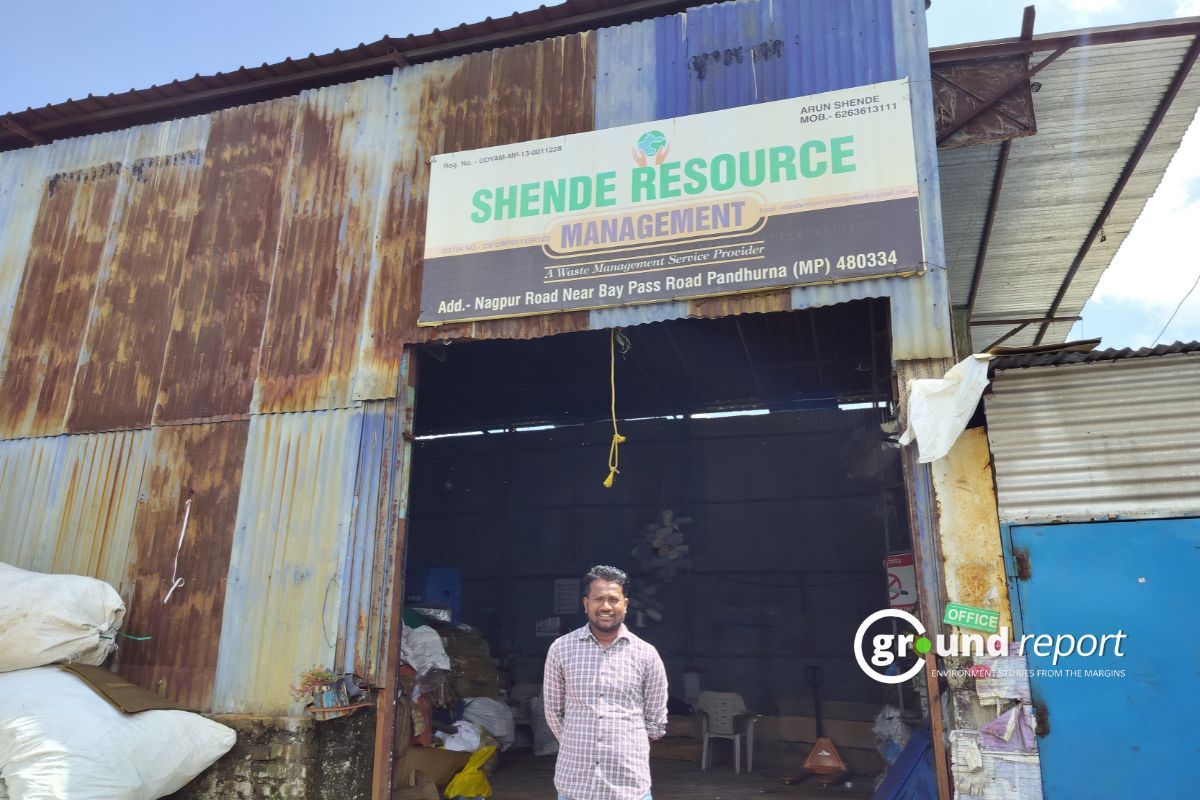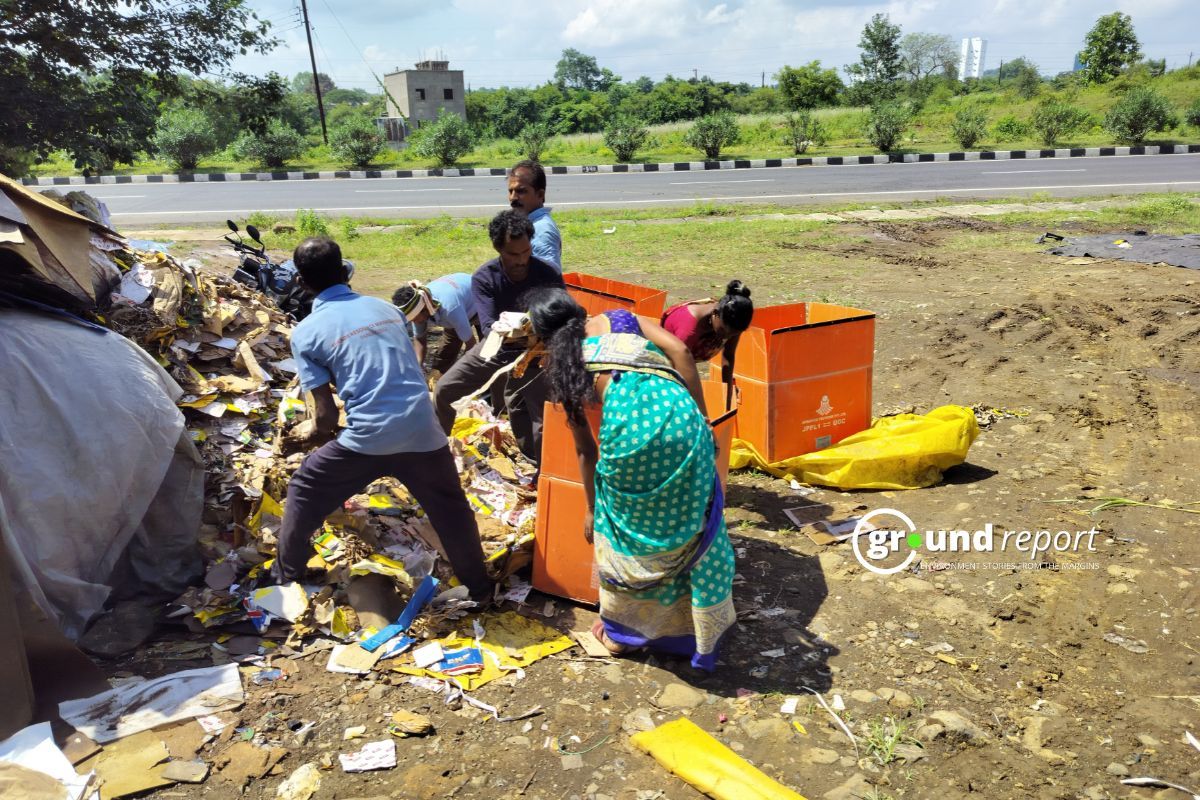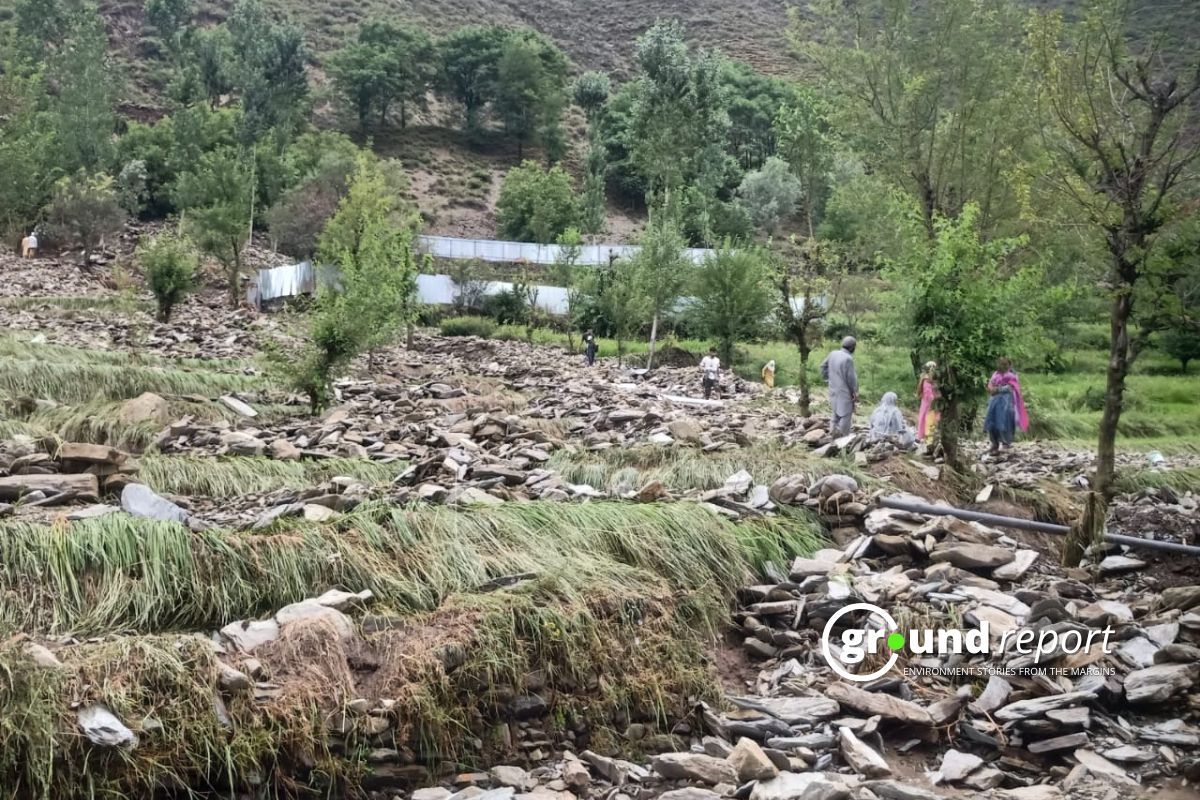According to a recent report, India is the largest producer of plastic waste in the world, producing 9.3 million metric tons of plastic waste annually. But Arun Shende, a young entrepreneur from Pandhurna in Chhindwara, looks at these figures differently. Arun has been working on plastic waste in Pandhurna for the past three years. Arun sees it as a solution to the global problem of plastic pollution as well as a means to employ people.
5 Years of Expertise in Plastic Waste
Arun started his career with tea-waste recycling under the Tata Group in 2018-19. Arun then joined Saahas Zero Waste, a Bangalore-based organization, where he got an opportunity to work with different municipalities across the country.
In the year 2022, when Saahas Zero Waste decided to open plastic waste recycling units at 4 different locations in the country, the responsibility of Pandhurna came to Arun. It was Saahas Zero Waste that set up Shende Resource Management, a facility, and machines for Arun in Pandhurna, where he is currently working on plastic waste segregation and recycling.
Initially, Arun used to pick up garbage directly from the municipal dumpsite and send it to the cement industry for coprocessing. Arun says that during that time he used to send 4 to 5 tons of waste daily for coprocessing. He further says,
When this work was going on, the idea came to my mind that we could save the environment by recycling the plastic waste of the dumpsite as well as earning profit from it. After this, with the help of Saahas Zero Waste, I opened a small facility inside the city and started working on plastic waste segregation and recycling.
Arun says that initially, he started the plastic waste recycling work with 5–6 employees in a small room. Later, he is working on a new 3000 sq ft facility outside the city. He has also increased their staff.
Waste Generation in Chhindwara and Nearby Municipalities
Together, all 14 civic bodies of Chhindwara district generate 6163.68 metric tonnes of waste daily. These include large bodies like Pandhurna, which generates 13.55 MT of waste daily.
If we include the municipalities adjacent to Pandhurna that fall in Maharashtra, then this figure becomes even bigger. For instance, Varud in Amravati and Katol municipality in Nagpur generate around 18 metric tonnes of garbage daily.
Arun picks up plastic waste directly from the dumpsites of these urban bodies and brings it to his unit and starts working on it. For this work, he contacted 10–12 municipal bodies like Pandhurna, Katol, and Varud within 100 km of his area.
Arun’s process of working on plastic waste
Arun first loads dry municipal garbage from the corporation into his vehicle and takes it to his facility. Usually, Arun insists to municipalities that only plastic waste is given to them. But often, due to a lack of source segregation, Arun has to collect this unsegregated garbage.
After that, Arun sorts this collected waste. The sorting machine kept in Arun’s facility helps him in this process. The sorting machine separates plastic from garbage. After that, different varieties of plastic are distinguished.
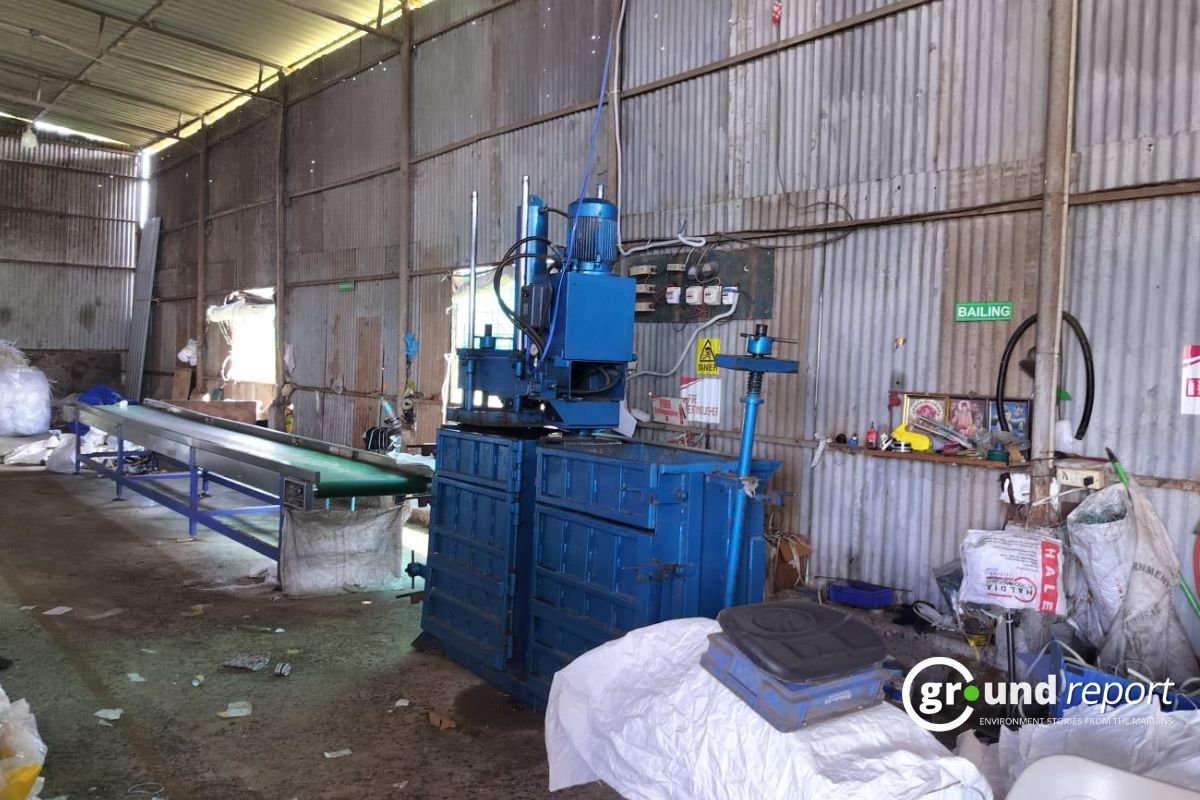
Sorting and Baler Machine After this, Arun contacts recyclers in his city. Whatever type of plastic the recyclers accept, Arun sells them that type of plastic waste. The baler machine kept in Arun’s facility comes in handy in this process. This machine makes a bundle of a certain type of plastic, after which the bundle is crushed and handed over to the recyclers.
If there is any plastic that recyclers don’t take, it is recycled by Arun himself. Arun gave the example of LD polythene. Arun recycles LD polythene and breaks it into small granules, from which polythene is made again.
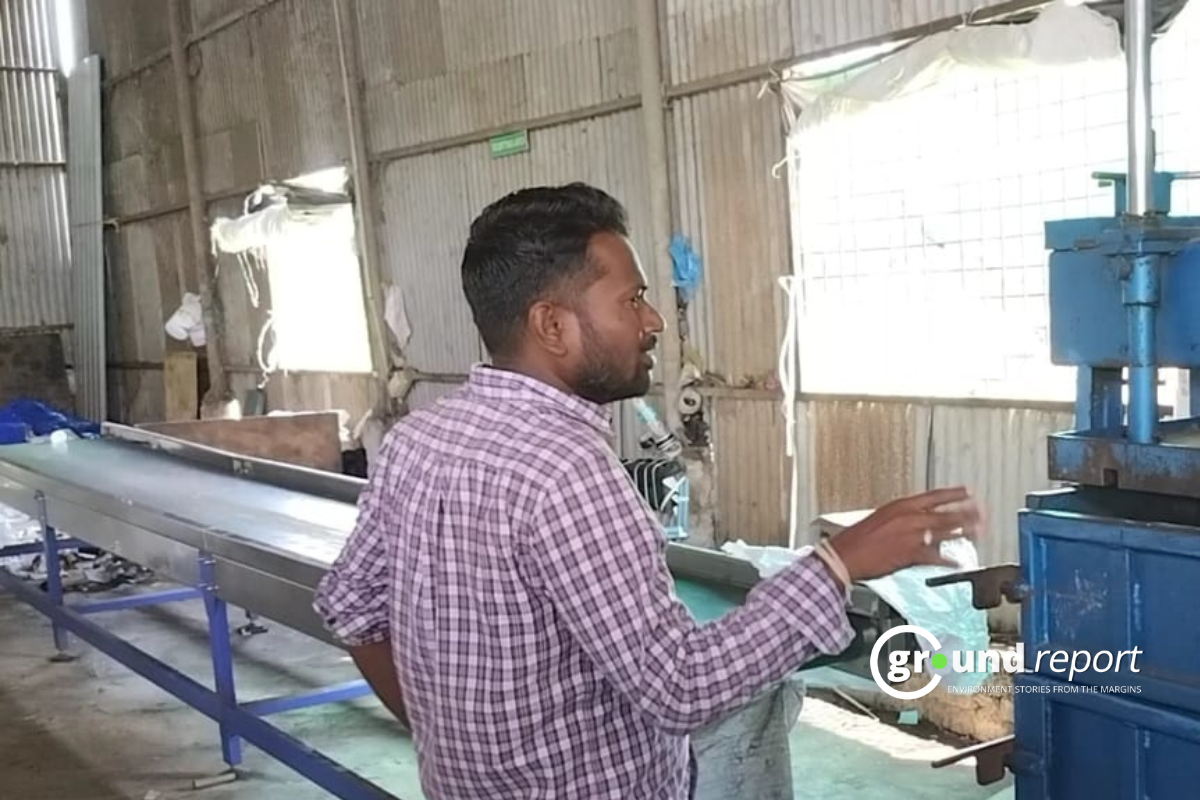
Arun showing sorting and baler machine After this entire process, such plastics are left, which cannot be recycled further. For this, Arun gives the example of LDPE (low-density polyethene) and PS (polystyrene) polythene. Any such plastic that is not recycled is discarded and sent to the cement factory in Chandrapur for processing. Arun says that he is solely concerned with preventing plastic from entering landfills.
Challenges Arun is facing
“We have limited resources,” Arun says he gets 2 to 3 tonnes of garbage daily from the municipal corporations. And after this process, he saves 1 to 2 rupees on 1 kg of waste.
Arun points out that, during festivals, the amount of waste increases even more. If they had more space and machines, this work would have been done faster. However, Arun is also planning to open small units in other areas around Pandhurna.
Apart from all these, the biggest problem facing Arun is the non-segregation of garbage. Arun says that sometimes the garbage coming from the Municipal Corporation contains a lot of soil, which makes his work difficult. Arun further says,
Therefore, everyone should adopt environment-friendly practices like using cloth bags instead of plastic ones and paper cups instead of plastic disposables. Apart from this, we should keep wet and dry waste separately, which increases the possibility of recycling the waste and saves the environment.
Why Segregation of Plastic Waste is important
Effective segregation of plastic waste markedly diminishes the volume of refuse that accumulates in landfills, thereby mitigating soil, air, and water pollution. Lack of segregation in plastic waste raises pollution levels, which impacts both ecosystems and human health.
By preventing recyclable materials from becoming contaminated with non-recyclables, the segregation of plastic waste improves the effectiveness of recycling procedures. This increases recycling facilities’ efficiency in processing materials and keeps valuable plastics from ending up in the waste stream. An estimated 14% of plastic waste was collected for recycling as a result of effective recycling procedures; this figure is expected to rise as waste segregation techniques improve.
Segregating plastic waste facilitates the reclamation of valuable materials, enabling their reuse in new products instead of depending on virgin resources. This not only conserves energy but also aids in alleviating the exhaustion of natural resources.
Enhanced recycling and resource recovery can substantially alleviate the strain on limited materials, promoting sustainable practices. In Arun’s case, separating the waste first and then separating the different types of plastic provides a better recycling option. Apart from this, this whole work has also established Arun as a good entrepreneur, who, along with earning profit, is also improving the environment.
Through this work, social prestige has increased
Arun says that today 10 to 12 people work with him regularly. They pay them an honorarium according to the local labour price, Rs 425 per day. Arun says,
In the initial phase of my work, I used to collect plastic from people’s shops. People have known me since then. People here call me ‘kachre wala’ or ‘kachra seth’. I see it as an honor that today I am recycling plastic that harms the environment.
Earlier, I used to work for 20–25 thousand rupees for the same work. Today, I am able to provide employment to 10 people while earning so much respect from my work. My family is also happy; they feel proud. Because of me, people get employment, and the environment is also protected.

Sarita who works in Arun's facility Today, every person in India generates 120 grams of waste every day. Arun sees this figure as a big possibility. Arun says,
As long as man is on this earth, garbage will come out. Plastic is a reality today. We need to create a system so that these plastics are recycled before they reach the dump site. While working here for the last few years, I have established excellent relations with the municipality. My effort remains that not a single piece of plastic becomes a part of the landfill. The plastic that cannot be recycled is sent to a cement factory in Chandrapur, 200 km away.
What is plastic co-processing?
Co-processing in the cement industry implies the use of plastic waste as fuel, especially polythene waste that is not recyclable. In this process, plastic waste is burned in a cement furnace, thereby reducing the consumption of coal and biofuels and providing relatively more affordable energy.
Co-processing of plastic waste is beneficial to the environment in many ways. This not only reduces CO2 emissions but also prevents non-recyclable plastics from going into landfills. In addition, the ash that is obtained when burning plastic is also used as a raw material in cement production.
Why is plastic harmful?
The presence of plastic waste in landfills exacerbates its negative effects. Plastic residues in landfills pollute the ground and water, leading to the leakage of toxic substances and a reduction in soil quality.
In addition, when plastic breaks down into microplastics and flows with air and water, it spreads into the natural ecosystem. This poses a serious threat to wildlife and human health. These microplastics have the ability to trap other pollutants, which increases their toxicity.
The presence of plastic waste in landfills also poses serious health hazards, as it can emit harmful volatile organic compounds (VOCs). Many of these chemicals can accumulate in the human body and cause hormonal problems. In addition, plastic in landfills persists for about a hundred years without decomposing, which increases the problems of pollution.
Today, India generates 26,000 tonnes of plastic waste every day, of which only 8 percent is recycled. Access to the remaining plastic landfills causes environmental degradation. If we look at the 8 per cent of plastic that is recycled, 96 percent of it is from the informal sector.
These figures underline the limited effort towards recycling plastic waste in India. The need of the hour in India is to have a system of recycling plastic waste on par with its collection. 34-year-old Arun has been preventing plastic waste from reaching the landfill for the last 3 years. However, there is still a need for a concrete policy towards curbing plastic pollution.
Support us to keep independent environmental journalism alive in India.
Follow Ground Report on X, Instagram and Facebook for environmental and underreported stories from the margins. Give us feedback on our email id greport2018@gmail.com.
Don’t forget to Subscribe to our weekly newsletter, Join our community on WhatsApp, Follow our Youtube Channel for video stories.
Keep Reading
Gujarat: 38 Animals, birds die at Statue of Unity complex in 2 years
18 billion animals sacrificed yearly without making it onto someone’s plate: Study
Living planet report: Global populations of wild animals declined 69% in 50 years

